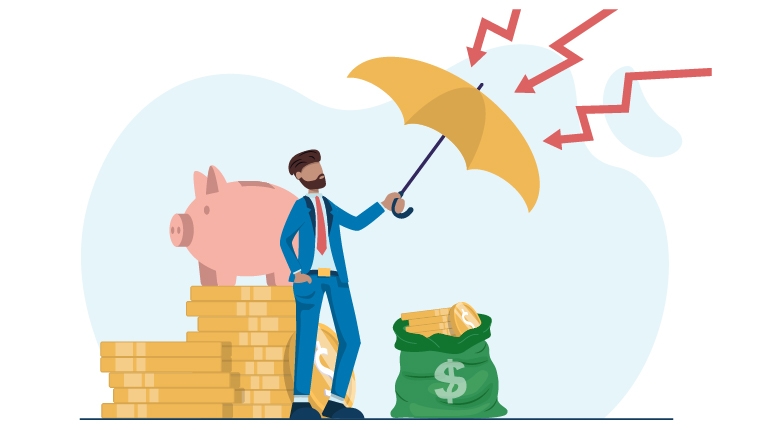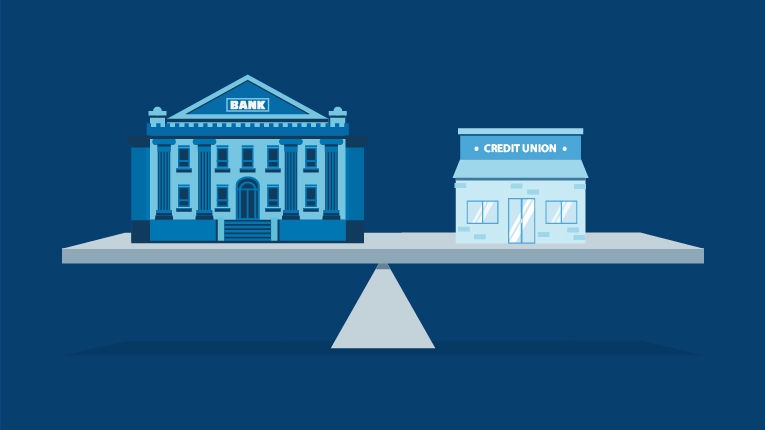CD early withdrawal penalty: What you need to know

If you need to withdraw your funds early (before the maturity date), it generally means paying a certificate of deposit (CD) early withdrawal penalty fee to the bank or credit union. This is often based on the term and amount of interest earned, but can also be a set amount determined by your financial institution.
It’s important to understand what happens when you take money out of a CD before the maturity date, including how CD early withdrawal penalties are calculated, and how to avoid these charges. We also cover a few reasons why you might want to consider making an early withdrawal on a CD despite the penalty you would incur.
What is a CD early withdrawal penalty?
A CD early withdrawal penalty is the fee charged by your bank or credit union when you withdraw funds from a certificate of deposit account before the term ends. Financial institutions charge a fee for withdrawing CD funds early because when you open a CD you are agreeing to hold a fixed amount of money (principal) in the account for a predetermined length of time (term) in return for an agreed-upon fixed interest rate and yield (APY). The end of the fixed term is known as the maturity date.
While a CD offers a low-risk way to earn a higher, fixed interest rate on your deposits, it also requires you to leave your money until the end of the term, which can range from a few months to several years. Often, CDs with longer maturity dates earn a higher interest rate (APY). If you wait until the CD maturity date, you can withdraw all or part of your original deposit plus earned interest without penalty.
Banks and credit unions charge a CD early withdrawal penalty fee to comply with reserve requirements on time deposit accounts such as CDs. The amount of the CD early withdrawal penalty can vary based on the financial institution, CD terms, interest rate, and market conditions. If the penalty is more than your earned interest, you stand to lose some of your principal.
It’s important to review your account agreement for CD early withdrawal policies specific to your bank and your account.
What types of penalties might you have to pay if you withdraw early?
Before investing in a CD, it’s important to carefully review your account agreement and disclosures to understand how the early withdrawal penalty is calculated. Penalties vary by financial institution, and even between CDs offered by the same bank. Here are a few ways an early withdrawal penalty could be assessed.
Monetary penalty
You might be charged a percentage of interest based on the original principal or the amount withdrawn. This percentage-based fee may be calculated based on a set number of days, weeks, or months.
For instance, depending on your financial institution, you could be charged the equivalent of three months’ interest for an early withdrawal from a CD that matures in six months or less. If you have five year CD, you might pay a penalty of 12 months’ interest or more. Or, your bank could charge a specific dollar amount such as the full amount of interest you’ve earned as of the date of the withdrawal.
Typically, CDs with longer maturity dates have higher early withdrawal penalties.
Loss of bonus
On CDs offering a cash bonus, you could lose any cash bonus you earned when you opened or reinvested in the CD as penalty for early withdrawal.
How does your financial institution calculate early CD withdrawal penalties?
If you’re thinking about making an early withdrawal, knowing how your financial institution will calculate a CD early withdrawal penalty charge can help you make an informed decision. Here are some of the ways they can be calculated:
A. Some financial institutions charge for a certain number of days’ worth of interest calculated on the original CD deposit amount as a penalty for early withdrawals.
Penalty = Interest Rate ÷ 365 (or 366 in a leap year) × Penalty Days × Original Principal Balance
For example, let’s say your bank charges an early withdrawal fee of 60 days of interest on a 24-month CD with an APY of 4.50% and you’ve deposited $10,000. Here’s how the penalty would be calculated:
Penalty = .045 ÷ 365 x 60 x $10,000
Penalty = $73.97
B. Some financial institutions calculate the penalty based on the amount of deposit being withdrawn from the account.
Penalty = Interest Rate ÷ 365 (or 366 in a leap year) × Penalty Days × Amount Withdrawn
Let’s say you withdraw $2,000 from the CD described in A above and the penalty is 60 days’ interest on the amount withdrawn. Here’s how the penalty would be calculated:
C. And if your penalty is calculated in months, instead of days, here’s how that would be calculated:
Penalty = Interest Rate ÷ 12 × Penalty Months × Original Principal Amount (or Amount Withdrawn)
Using our example of a 24-month CD with an APY of 4.50% and a $10,000 initial deposit. If the early withdrawal penalty is 3 months’ interest on the original principal, here’s how the penalty would be calculated:
Penalty = .045 ÷ 12 x 3 x $10,000
Penalty = $112.50
When could an early withdrawal be a good idea?
While an early withdrawal from a CD account generally results in a penalty fee, there are some circumstances where it may be your better, or only, option. Here are a few situations where you might want, or need, to consider making an early withdrawal on a CD account:
You need to cover a large emergency expense. If you were to put an unexpected medical bill on a higher-interest revolving credit card balance, your interest expense on the card could potentially be more costly than incurring the CD early withdrawal penalty and using some or all the funds to help you pay off the medical bill.
You find a better investment that could earn more yield. If rates have risen sharply since you made your CD deposit and you think taking advantage of a new, different opportunity could outweigh the early withdrawal penalty you would incur by accessing your CD money before maturity, it might be worth considering taking.
You need extra money to cover a down payment. If putting the money in your CD toward a down payment on a new home could reduce the size of your loan and save you money on the cost of financing, making the early withdrawal might be worth it.
You forgot to close your CD account before the maturity date and you don’t want to leave your money invested for another term.
Your accounts or property are garnished. In certain cases, such as when a garnishment or levy has been issued against your income or assets, early withdrawal from your CD may be your only option if you don’t otherwise have the money to satisfy the debt owed.
How to avoid CD early withdrawal penalties
Giving yourself more flexibility in your CD selection can help you avoid paying early withdrawal penalties, sometimes even if you need to access your money before the CD matures.
Know when an early withdrawal penalty applies.
Carefully read your CD account agreement for information to learn what could trigger an early withdrawal penalty or fee. Even if the bank doesn’t use the word “penalty,” it must explain under what conditions you stand to lose your principal or interest earned if you withdraw your funds before the CD maturity date.
Know your maturity date.
Generally, most banks and credit unions set up CDs so that they automatically renew, or rollover, at the end of the term unless you specifically tell them not to. If you have a CD that automatically rolls over and you forget to withdraw funds in time, the new CD will typically have the same term as the matured CD, however, the interest rate and yield could be lower. When a CD matures and automatically renews into a new CD, typically there is a grace period (between 5 and 15 days) during which time you withdraw your funds and close the CD without an early withdrawal penalty.
Choose a no-penalty CD.
Unlike a traditional CD, a no-penalty CD offers you the flexibility to withdraw your money (including interest earned) starting seven days after you make your initial deposit without paying an early withdrawal penalty. However, typically you can only make an early withdrawal of the full balance, not a partial balance. Also keep in mind, generally, no-penalty CDs offer lower APYs and shorter terms (usually one year).
Build a CD ladder strategy.
A CD ladder strategy involves splitting up your deposit into CDs with different maturity dates, allowing you to take advantage of higher long-term rates without locking up all your funds for longer than you would like. Having multiple CDs with carefully staggered maturity dates enables you make sure your never more than a few months away from being able to access your money without risk of early withdrawal penalty.
Request a waiver.
Some banks may waive early withdrawal penalties in certain situations, such as:
Depositor is declared legally incompetent, becomes disabled, or dies
CD is retitled to a new owner without a change in term or interest rate (APY)
Withdrawal is required by court order
Widespread economic or market crises
The bottom line
Certificates of deposit have the potential to help you reach your savings goals faster compared to regular savings accounts. However, if you need to access your money before the CD maturity date, you may incur an early withdrawal penalty which could mean giving up some of your interest earned or losing some of your principal balance.
Knowing when a CD early withdrawal penalty applies, staying on top of your maturity date, and choosing flexible CD options such as a CD ladder can all help you to maximize yields while maintaining a certain measure of “liquidity” and avoid a CD early withdrawal penalty should you need the money.




